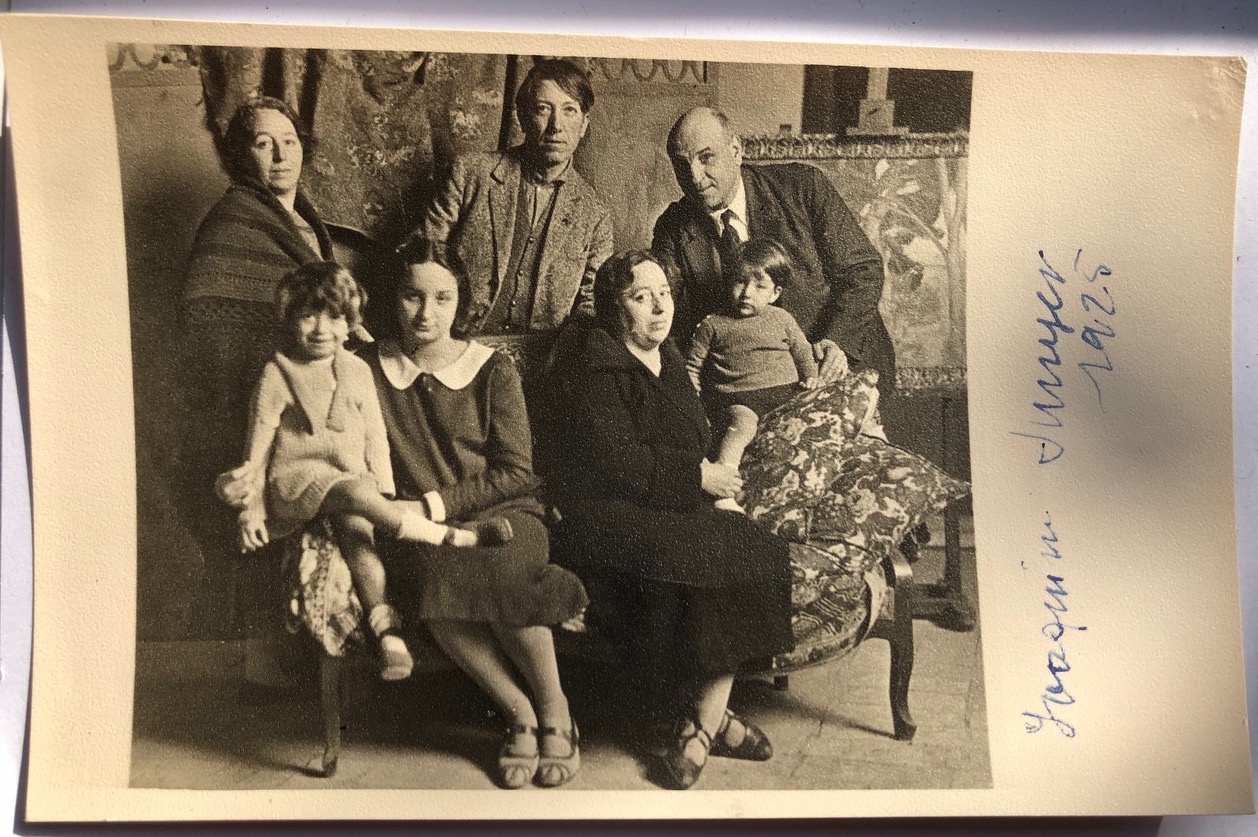-
Joaquim Sunyer
Sitges, Barcelona 1874 - 1956
Cabaret scene in Paris
Paris, 1904
Pastel
62 × 47 cm
Signed and dated "Sunyer 19...," bottom left
Label on the passe-partout: "Hériot / Encadreur / Paris"
Awards and exhibitions
1903 - Salon d'Automne, Paris
1920 - Salon d'Automne, Paris
1923 - Exposición de Primavera, Barcelona
1924 - Madrid; Sala Parés, Barcelona; Salon d'Automne, Paris
1934 - Galerías Syra, Barcelona; Carnegie Institute, Pittsburgh
1949 - Légion d'Honneur Medal, given by the french government, Paris (France).
1952 and 1955 - Bienales Hispanoamericanas de Arte, Barcelona
1954 - "Gran Premio a la obra y a la vida de un artista", Bienal Hispanoamericana, La Habana (Cuba).
Joaquim Sunyer attended the School of Arts and Crafts in Barcelona (known as La Llotja), where he was a fellow student of Mir, Nonell, Torres-Garcia and Gosé during the academic year 1894-95, a period in which he painted in the same style of the Colla del Safrà group, of which he was never formally a member.
He drew popular scenes for the newspaper La Vanguardia in 1896, the year in which he participated in the Third Exhibition of Fine Arts in Barcelona, and he settled in Paris a little later. There he seems to have made friends with Forain and Willette and illustrated Jehan Rictus’ Les Soliloques du Pauvre (1897), Henry Fevre's Les Minutes parisiennes: 5 heures-rue du Croissant (1901) and Gustave Geffroy's Les Minutes parisiennes: 7 heures Belleville (1903), and published drawings in magazines such as Le Fureteur (1901). He specialized in street scenes and intimate interiors. He made friends with Picasso and Manolo Hugué. His style at the time was still hesitant, reflecting a number of Post-Impressionist influences.
In 1905-06, on the initiative of the art dealer Henri Barbazanges, who wanted works with Spanish subjects, he travelled around Castile and, while in Madrid, visited the Prado Museum. He passed through his hometown, Sitges on his way back to Paris, where he exhibited in 1907. The following year and in 1909 he also exhibited in Liège, Belgium. This was also the year in which the Catalan essayist and art critic Eugeni d’Ors contacted him in Paris. During his second stay in the French capital, Sunyer met Renoir – with whom he had long conversations – as well as Modigliani, Marquet and Vázquez-Díaz, who became his neighbour. After exhibiting at the Galerie Barbazanges (1910), he returned to Sitges.
Sunyer had rid his style of most of his former Post-Impressionist influences as he approached his Mediterranean subjects and figures, using a clear palette and a simplified canon derived from Cézanne. In Catalonia, this new style contrasted with that of the Modernista painter Isidre Nonell. The death of the latter and the great success of Sunyer’s exhibition at the Fayanç Català Galleries in 1911 quickly turned him into the leading painter in Catalonia. The Catalan poet and essayist Joan Maragall wrote a long and enthusiastic review of the exhibition for the magazine Museum, praising Sunyer’s simple, idyllic scenes, whose genuinely Catalan roots he applauded, with special praise given to the painting Pastoral (Barcelona, J. A. Maragall collection). The Noucentista movement changed its course after Sunyer’s reappearance.
Sunyer also went to Versailles and exhibited in Munich in 1911, and the following year he stayed in the French Catalan town of Ceret, in the Vallespir region. He travelled through France and Italy, where he was impressed by the work of Signorelli. At the outbreak of the First World War, he moved to Barcelona, followed by Mallorca (1915-16) and Paris (1918). Once married, he returned to Sitges (1919). He spent the first months of the Spanish Civil War (1936-39) in Provence and Italy before he moved again to Paris in 1937. Shortly after, he went to Banyuls to be near his friend, the French sculptor Aristide Maillol, not returning to Barcelona until 1942. For the last 15 years of his life, he exhibited his paintings repeatedly in Barcelona (1942, 1944, 1945, 1949, 1951, 1952 and 1955) and Madrid (1943, 1946 and 1950). In 1952 he also exhibited in Bilbao. A major retrospective of his work was held in Madrid on the centenary of his birth in 1974.
As a painter, Sunyer is the most conspicuous representative of the Noucentisme. His almost Cubist constructivism of the 1910s gradually lost its rigidity and achieved a plain simplicity, disdainful of virtuoso displays of technique, both in his landscapes and in his typical female nudes, as well as in his portraits – breaking away from conventional portraiture – of Catalan intellectuals like Josep Maria López-Picó, Josep Maria Junoy, Gaziel, Ferran Soldevila or Jacint Raventós. He was a classic exponent of the joie de vivre of much of his contemporary Mediterranean painters.
The work we present here belongs to his youthful period in Paris. It is a delicate pastel that portrays a cabaret scene in Paris, where a singer bursts forth onto the stage. In the head of one of the orchestral musicians, we find echoes of Daumier, and one of the ladies on the left, tall and thin, reminds us of the women painted by Hermen Anglada Camarasa in his nocturnal scenes. There is also a hint of Toulouse Lautrec and Steinlen in the atmosphere – two major influences on young Spanish artists like Picasso and Sunyer.

Joaquim Sunyer, Woman in a cafe concert in Paris, 1905m 37 x 31.5
Museu Naciolan d'Art de Catalunya, Barcelona.

Joaquim Sunyer and his family, 1925
Bibliography
Benet, Rafael. Sunyer. Barcelona: Polígrafa, 1974, rep. p. 199, cat. 361
